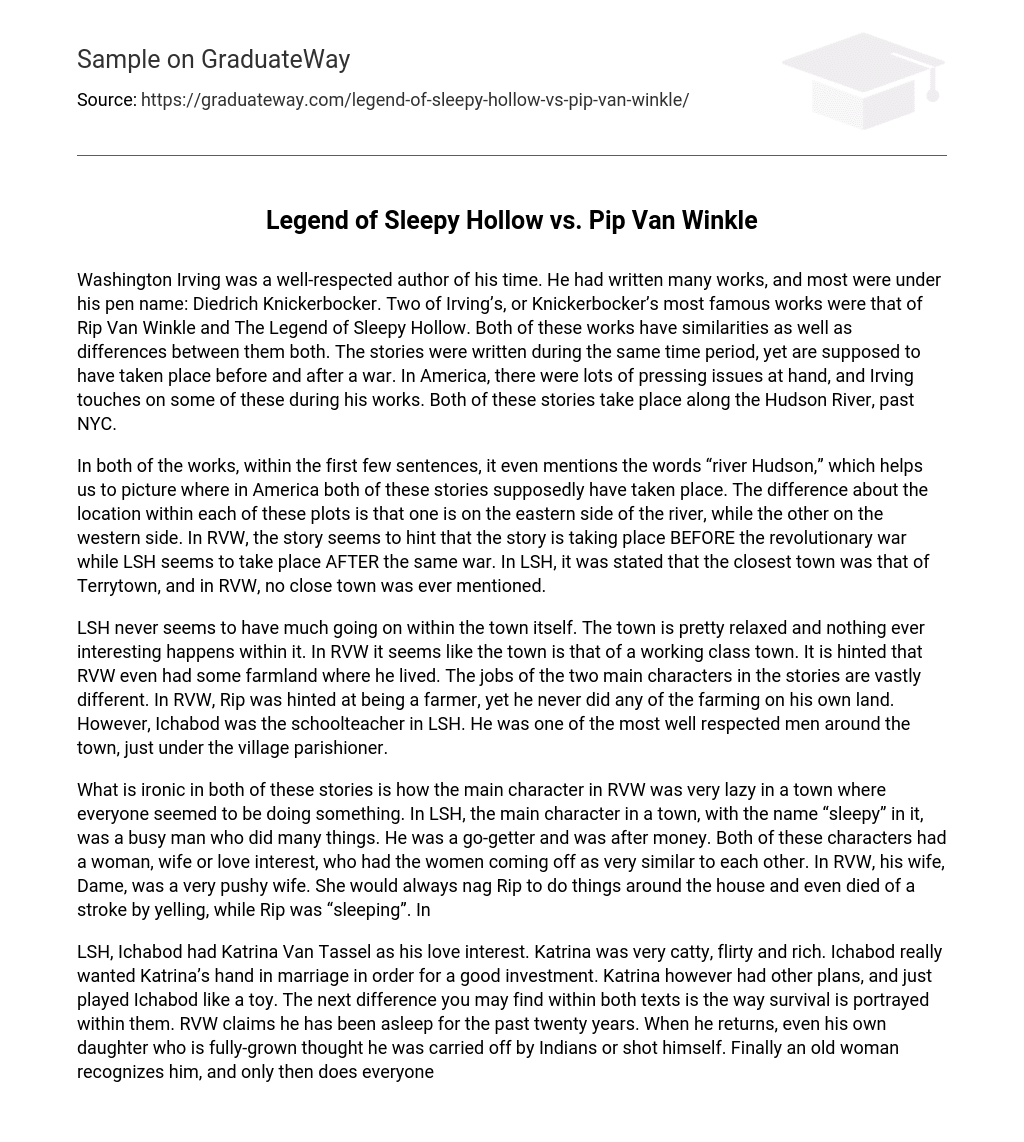Washington Irving, who also went by the pen name Diedrich Knickerbocker, was a respected author who penned many literary works. Two of his most renowned pieces, Rip Van Winkle and The Legend of Sleepy Hollow, exhibit both commonalities and disparities. Although written concurrently, these stories take place before and after a conflict. Within these narratives, Irving tackles important concerns in America’s society while unfolding the plot along the Hudson River outside of New York City.
Both works mention the words “river Hudson” early on, providing context for the American setting of both stories. However, the plots differ in terms of location, with one occurring on the eastern side of the river and the other on the western side. The implication in RVW is that the story is set before the revolutionary war, while LSH appears to take place after the same war. LSH mentions Terrytown as a nearby town, whereas RVW does not make any reference to a nearby town.
LSH lacks excitement within the town itself, while RVW portrays a working class community, with hints of farmland. The occupations of the main characters differ greatly: Rip in RVW is implied to be a farmer, though he does not farm his own land, while Ichabod in LSH is the well-respected schoolteacher, just below the village parishioner.
The irony in both of these stories lies in the contrast between the main characters and their respective towns. In RVW, the main character is lazy in a town where everyone else is productive. Meanwhile, in LSH, the main character is busy and driven in a town named “sleepy.” Both characters have women in their lives who share similarities. In RVW, Rip’s wife, Dame, is pushy and constantly nags him to do household chores. She even dies from a stroke while angrily yelling at Rip while he is “sleeping.”
LSH and Ichabod Crane were romantically involved with Katrina Van Tassel, who was known for being both flirtatious and wealthy. Ichabod desired to marry Katrina in hopes of securing a prosperous future. However, Katrina had ulterior motives and used Ichabod as a plaything. Another contrast between the two texts is the portrayal of survival. In RVW’s narrative, he claims to have been asleep for two decades. When he reappears, even his own grown daughter initially believed he was kidnapped by Native Americans or had taken his own life. It is only when an elderly woman recognizes him that everyone accepts RVW’s survival.
It is believed that RVW was the original “draft dodger” and that he never actually slept for such a long time, which would also explain Rip’s survival. In LSH, it is believed that Ichabod is killed by the horseman, until “Knickerbocker” brings news that he has supposedly survived and relocated to another part of the country as a judge. Brom bones finds humor in the broken pumpkin found where Ichabod “died,” leading readers to consider the possibility that he could have been the horsemen. Both stories are meant to be old wives’ tales, and both mention birds within their narratives.
In Rip Van Winkle, the birds always identify Rip until he “sleeps” for twenty years. When Rip returns after such a long absence, the birds all squawk at him, as if they don’t recognize him anymore. In The Legend of Sleepy Hollow, Ichabod is frequently associated with birds. His last name is Crane, which is a type of bird. He physically resembles a bird, particularly a stork. Ichabod is a knowledgeable schoolteacher, and owls are often symbolically associated with teachers. When Van Tassle rejects his proposal, Ichabod is described as “crest fallen,” similar to a rooster.





